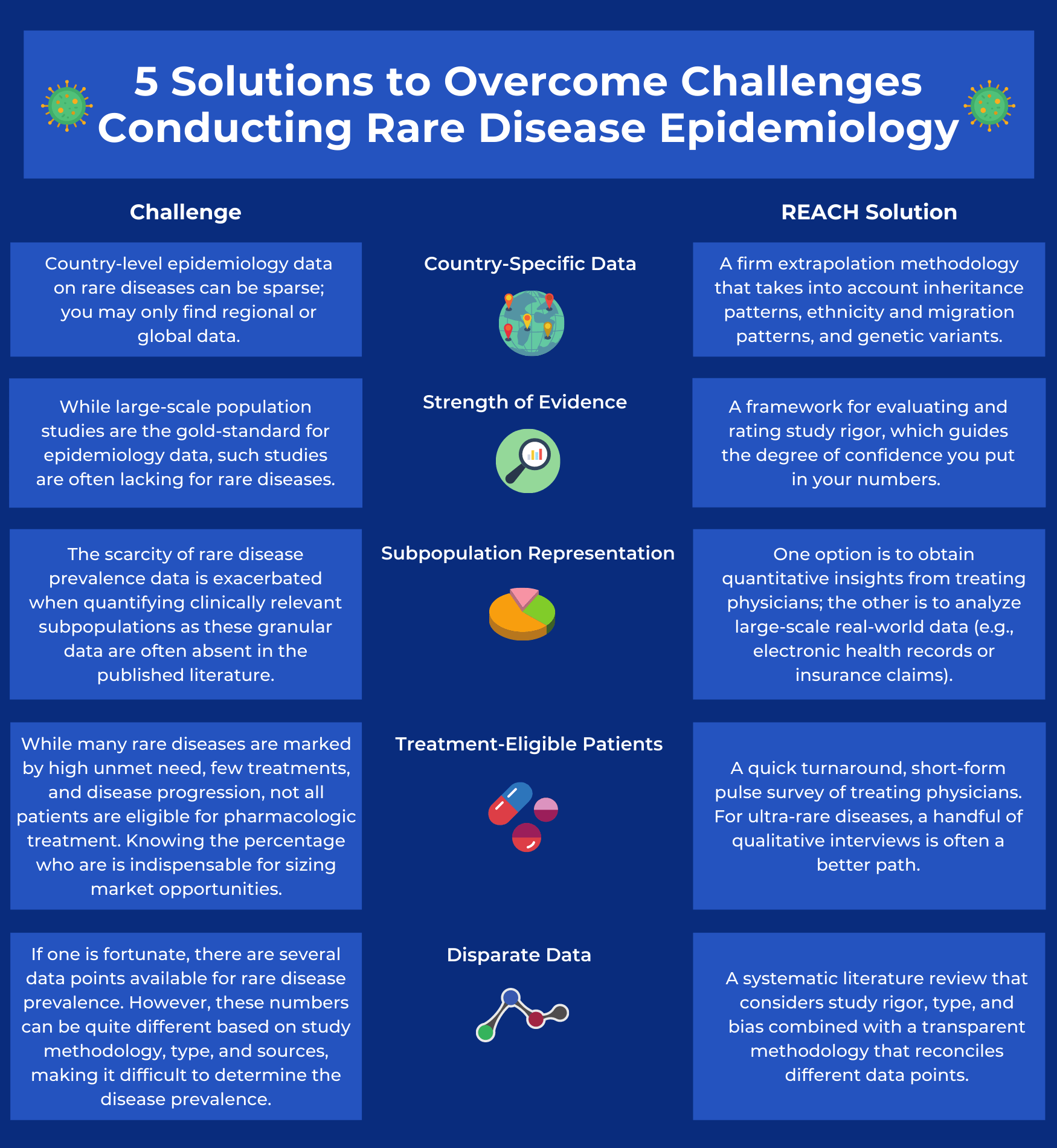Epidemiology and patient population dynamics are at the core of understanding any disease market. For rare diseases, getting a firm grasp of the disease prevalence and incidence, diagnosis rates, treatment rates, representation of clinically relevant patient subpopulations, and disease natural history can be exponentially more challenging than getting these same data and information for highly prevalent diseases. Additionally, obtaining the epidemiology and patient population data for niche subpopulations of highly prevalent diseases can also be quite challenging. Some of the key challenges with conducting epidemiology and patient population market research for rare diseases and niche subpopulations center around a lack of data, disparate data, or data that is not readily available by doing a quick search of the published literature. Successful sizing and understanding of rare and niche disease patient populations can be an onerous process but is doable by combining a well-documented systematic review of the literature, combing through various data sources (e.g., patient registry data, real–world data) and strong secondary and primary market research skills. In this blog, we lay out key challenges with sizing and understanding rare and niche disease patient populations and topline solutions.

